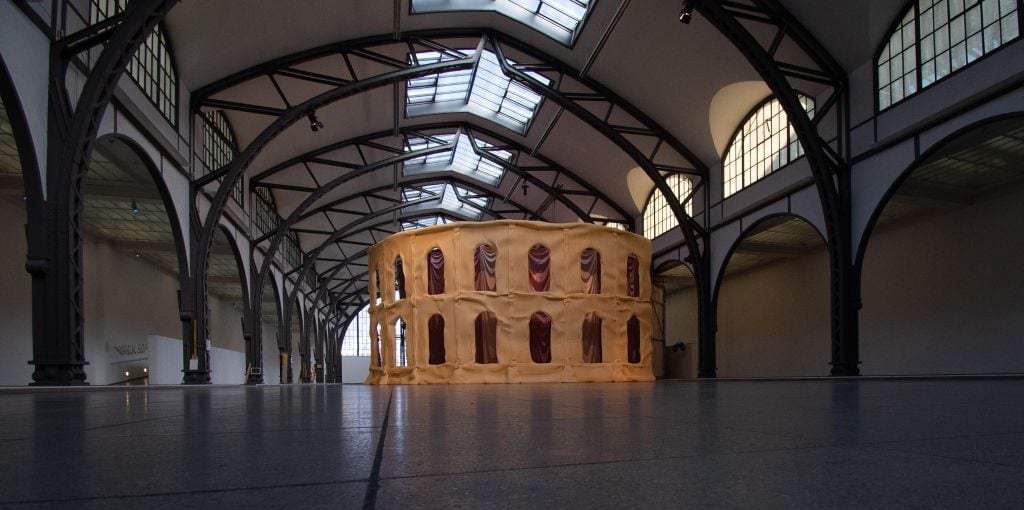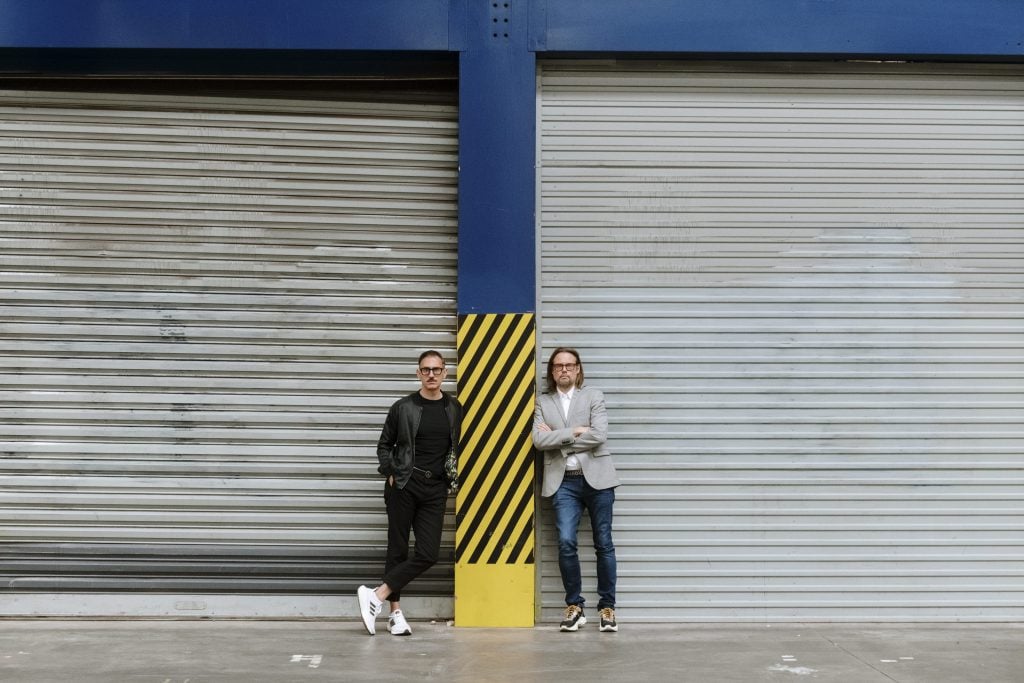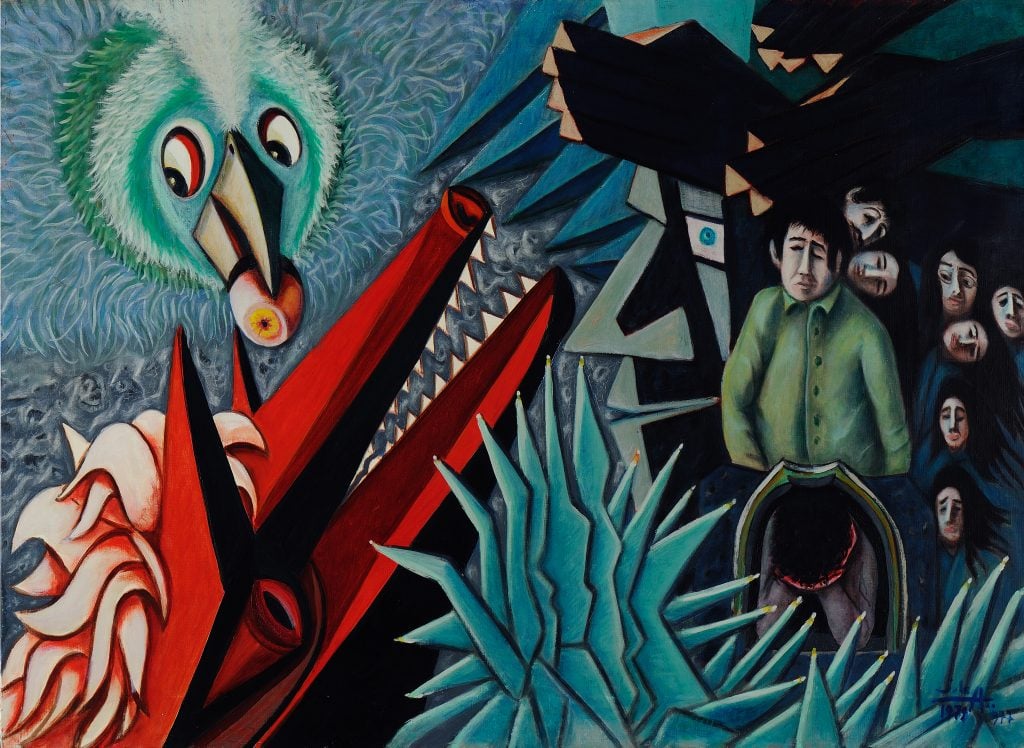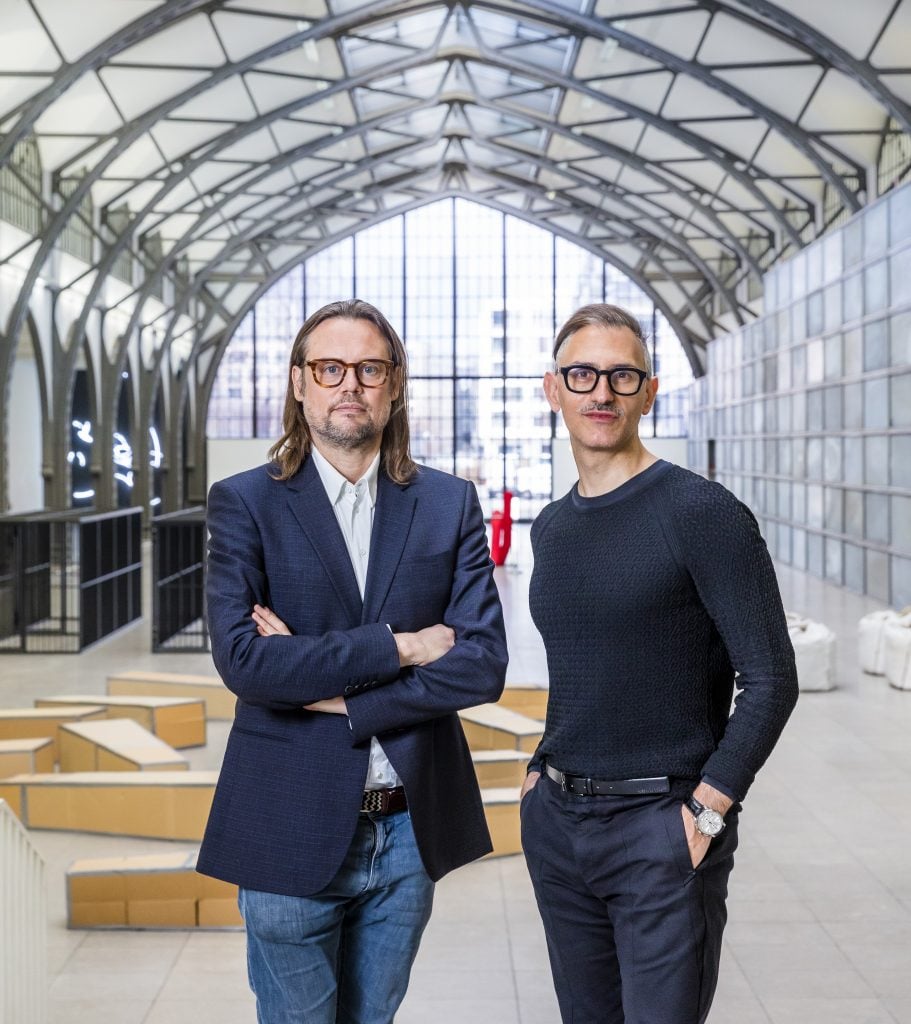In a landmark move in 2019, the German culture ministry decided that a consortium of Berlin’s major institutions, including the Hamburger Bahnhof and the Neue Nationalgalerie, would be broken up into smaller, more manageable bits.
Even more groundbreaking than the new structure of these institutions—long lumped together into one big, soupy entity with a string of issues—is that the Hamburger Bahnhof gained not one new head, but two.
Sam Bardaouil and Till Fellrath took up their joint role in the new year, just as Klaus Biesenbach moved into the Hamburger Bahnhof’s sibling institution, the Neue Nationalgalerie. The appointment of Bardaouil and Fellrath makes the Hamburger Bahnhof the first institution of such scale and importance to be co-piloted by two people.
Bardaouil, who is from Lebanon, and the German-born Fellrath have been working together as a curatorial duo since 2008, and have enormous experience working with museums, including German institutions. But they come from different perspectives.
“This combination of us coming from two opposite poles refutes a lot the other person’s ability to say that one is speaking from a colonial or a colonized point of view,” Bardaouil told me. “It complicates the narrative. We represent different points of view, different geographies.”
This “outsider” view—and their globally inflected CVs that include projects with around 70 institutions worldwide—may be exactly what the German landscape needs.

View of the Hamburger Bahnhof in 2021 during a show by Pauline Curnier Jardin. Photo: Paul Zinken/dpa-Zentralbild/dpa via Getty Images.
“There’s a lot of structural change underway and nobody knows where this is going,” Fellrath told me in their shared office, where their desks are set up back-to-back, so the two face one another. “I think there’s a strong desire from all the actors to rethink how these institutions should run.”
The duo has been in regular meetings with Biesenbach and other representatives from the Prussian Cultural Heritage Foundation, the umbrella organization that runs and funds the Hamburger Bahnhof, as well as other institutions, including the Humboldt Forum.
“The autonomy of all these institutions is strengthened, as is their ability to be fluid, responsive, and agile,” Bardaouil said of the reorganization of the museums.
The two heads have their minds in multiple places beyond Berlin’s city limits. In addition to overseeing structural overhauls and programming plans in Germany, Bardaouil and Fellrath are also the curators of France’s Venice Biennale pavilion, as well as the Lyon Biennial, which opens in September.
“All of these projects are on a continuum,” Bardaouil said. “It is not like you start working on one and stop working on another. It is all a part of a continuous conversation.”

Sam Bardaouil and Till Fellrath at the location for the 2022 Lyon Biennale. © Blandine Soulage
Bardaouil, who spent the early part of his career in Lebanon and Dubai, and Fellrath have been working to build bridges between the Middle East and the West in particular. They met in New York in 2008 to work on such a project. Their partnership, called Art Reoriented, began later that year.
For the French pavilion, they are curating, together with Yasmina Reggad, works by the artist Zineb Sedira, the first French artist of Algerian heritage to helm the pavilion. Her project will focus on Algerian cinema from the 1960s and 1970s, and its connections to the Italian and French film scenes of the same era.
“When you come from certain parts of the world, there are stereotypes that come with it,” Bardaouil said. “There is this intention of integrating us, of exonerating us as the other by giving us an equal voice. Sometimes you realize that, when people are trying to do that, they end up doing the exact opposite, because they give you a label.”
For the Lyon Biennale, the most widely respected exhibition of its kind in France, Bardaouil and Fellrath have settled on a show called “Manifesto of Fragility.” One of its main themes is a historical look at Beirut between 1958 and the beginning the Lebanese Civil War in 1975—”the golden sixties” when the Lebanese capital became the cultural pulse of the Middle East. The exhibition includes artists like Etel Adnan and Simone Fattal. (A preview opens at the Gropius Bau in Berlin on March 24, in collaboration with the Lyon Biennial.)

Aref El Rayess, Untitled (1977–78) on view as part of “Beirut and the Golden Sixties: A Manifesto of Fragility” at Gropius Bau, from March 25 to June 12. Aref El Rayess Foundation, Aley, Mount Lebanon, Courtesy: Saradar Collection
After Venice and Lyon are out of the way, the duo is eager to set up fully in Berlin.
“Certain institutions in different pockets of the world have been trying to understanding what it means to be a museum in the world today. They arrived at different solutions,” Bardaouil said. “We have experienced and been, in some cases, involved in these different strategies, and we hope to draw from these many sources to create a customized approach for Berlin.”
Tellrath added that the Hamburger Bahnhof, housed inside an old train station left in disrepair during the Cold War, is fertile ground for reorienting curatorial practices.
“The word promise comes up a lot,” Bardaouil said. “There’s so much to be done, and there is so much potential.”









